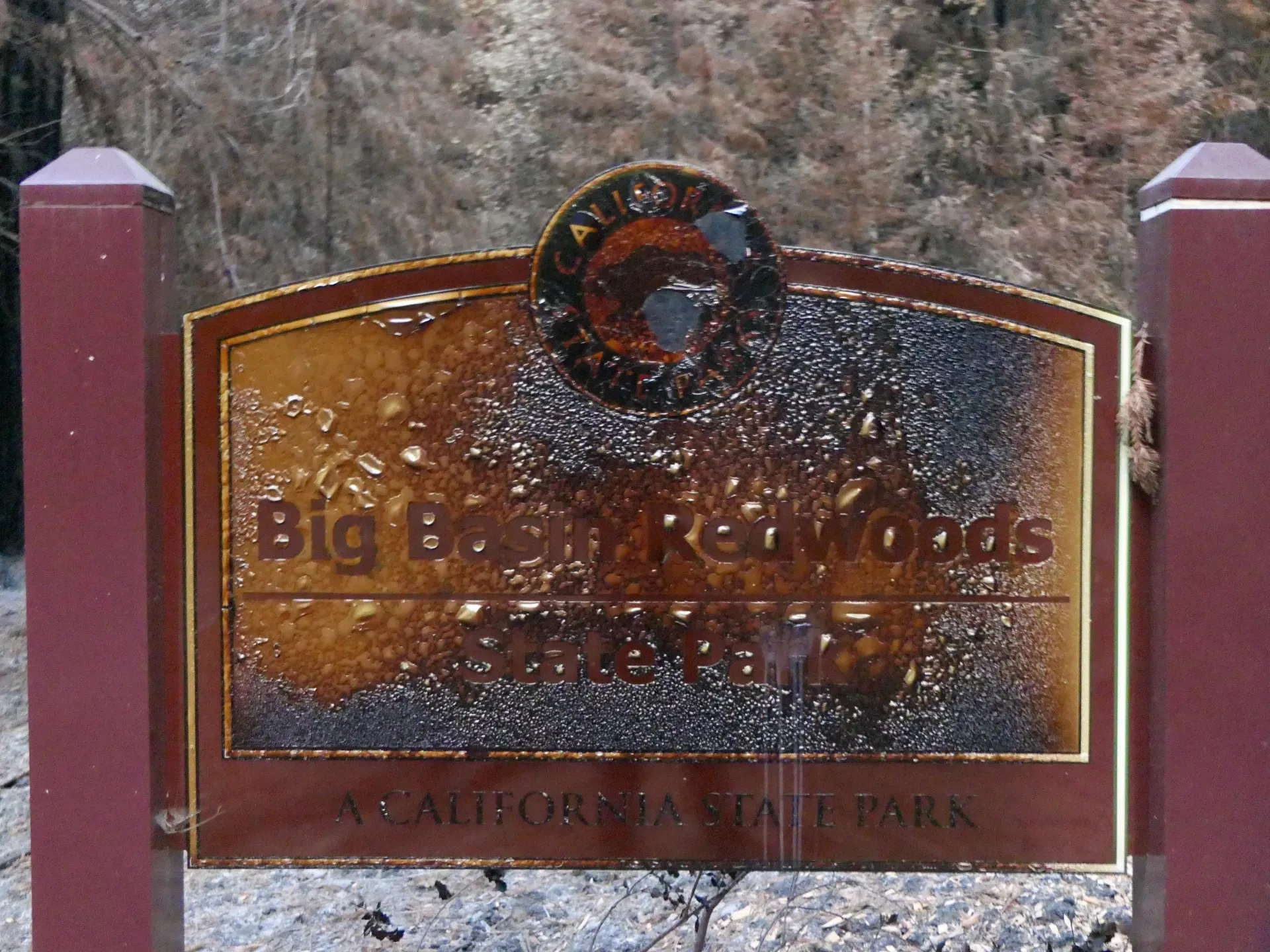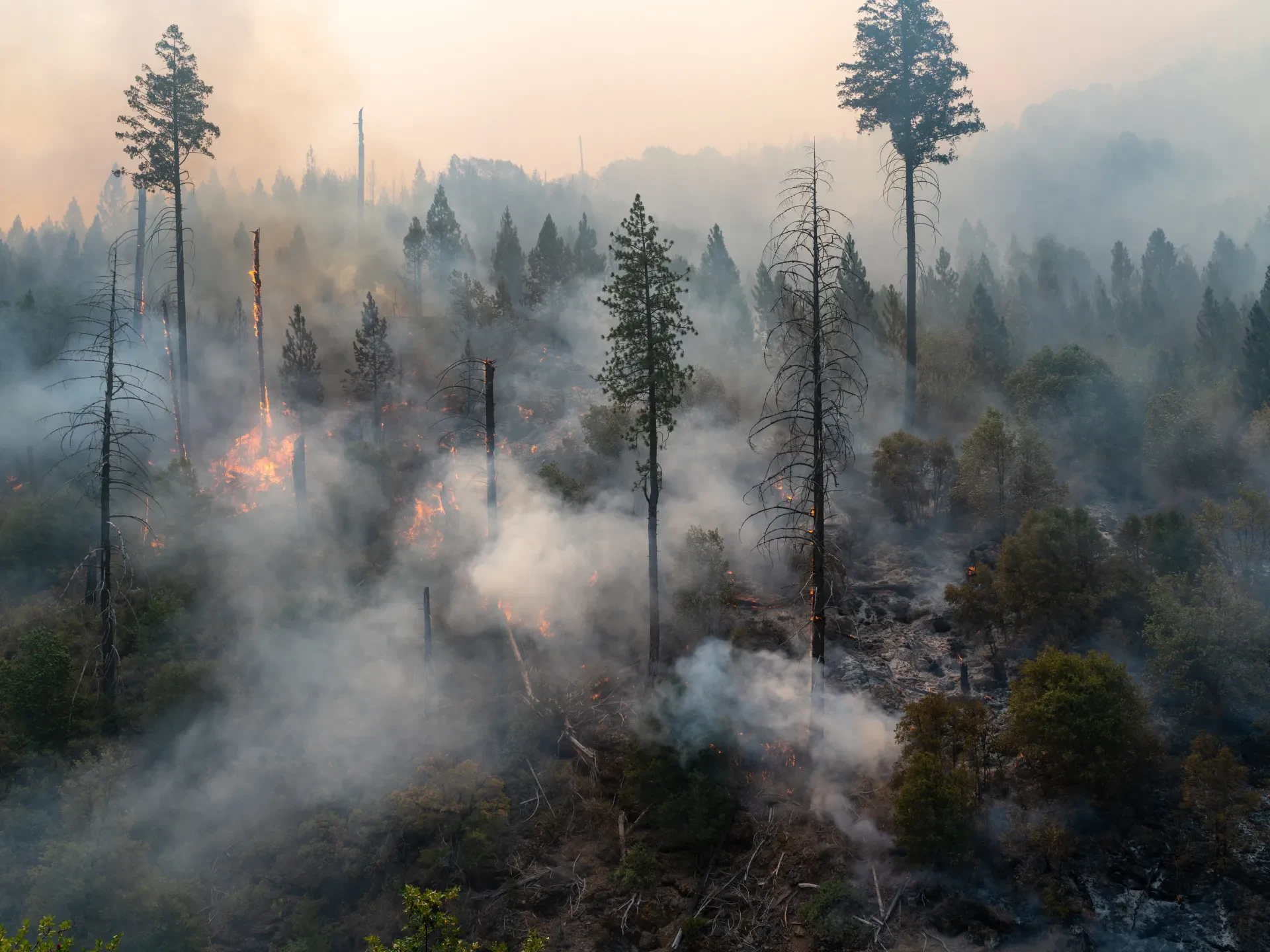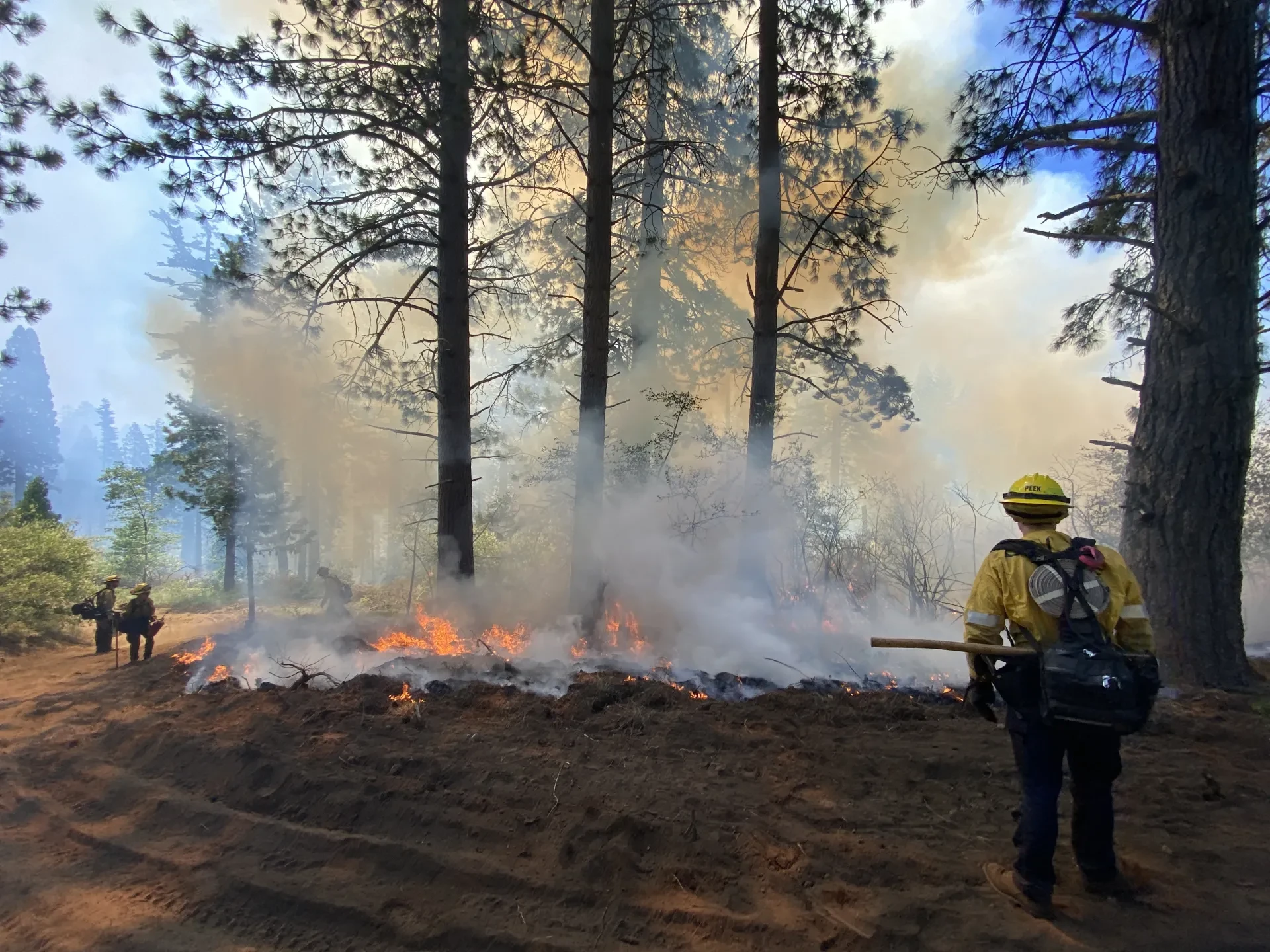Wildfire is a key natural disturbance that has shaped California landscapes for centuries. Forest, chaparral, and other ecosystems have adapted to fire-prone environments and developed a resilience to or even a dependence on fire. In some areas, frequent, low-intensity fires also removed excess fuels that could drive a potentially catastrophic wildfire. However, years of fire suppression, banning of Indigenous burning practices, and the increasing threat of climate change have caused an unprecedented increase in the frequency, scale, and intensity of wildfires in California. This trend resulted in California’s worst fire season on record in 2020, when over 4 million acres of land burned — approximately 4% of the entire state — including 97% of Big Basin Redwoods State Park, the oldest state park in California. Returning fire to the landscape is essential to increase wildfire resilience across the state, including state parks.
California’s history of fire
For thousands of years, Indigenous peoples used fire to maintain meadowlands, fell trees, increase plant productivity for harvest, and more. Perhaps most importantly, they set fires to remove thick brush and fuel that could drive a catastrophic wildfire. Naturally occurring wildfires (primarily started by lightning strikes) were allowed to burn, further clearing out potential wildfire fuel. The frequency and severity of wildfire — called the fire regime — depended on the landscape. For example, forest ecosystems experienced frequent, low-intensity fires, while chaparral saw the opposite.
When Western settlers arrived in California, they forcibly removed tribes from their land, banned Indigenous burning practices, and implemented a policy of complete fire suppression by the turn of the 20th century. This has resulted in today’s dense forests choked with fuel and at high risk of severe wildfire. The dangers of total fire suppression were recognized in the mid-20th century, and the importance of reintroducing fire to historically fire-prone ecosystems has become increasingly clear in recent years.
How climate change is driving wildfires in California
Over a century of fire suppression is now combining with climate change to further drive the increase of severe wildfires in California. Worsening droughts are making trees more vulnerable to pests and disease, which increases tree mortality and creates more fuel to drive wildfires. Longer droughts and drier conditions are also making fuel more flammable and causing fires to burn larger and hotter. These impacts will only worsen as temperatures continue to rise — California’s Fourth Climate Change Assessment projects a 77% increase in acres burned every year by 2100. Climate change and fire suppression have turned California’s forests into tinderboxes, and reintroducing fire to the landscape is critical to reduce fuels and increase wildfire resilience.
Reintroducing fire to the land: Prescribed burns and beneficial fire
Prescribed burns are purposefully set fires that reduce available fuel and restore a healthier open forest structure that is more resilient to wildfire. Prescribed burns are typically low-intensity and are conducted outside of the fire season — ideally several days after it rains — reducing wildfire risk with minimal long-term damage to the environment. Prescribed burns also have positive ecological effects, such as promoting new tree growth and lessening the invasion of nonnative plants, which thrive after severe wildfires.
Prescribed burns are a critical tool to reintroduce fire to the landscape, but they require extensive planning and resources to minimize risk. Experts on the ground are essential to ensure the burn is safe and effective. Physical barriers and landscape features can also be used to contain prescribed burns. For example, fire moves slower when traveling downhill, and a road or stream can be used as a fire break. If possible, preparing burn sites beforehand by selectively removing small trees, shrubs, and other fuels will help control fire severity and behavior and make the burn more effective.
Beneficial fire can also be reintroduced to the landscape by allowing wildfires to burn under controlled conditions — a technique called managed wildfire. Managed wildfire is typically only used in low-risk fire conditions with minimal risk to people or property. Managed wildfires have significant differences in severity, size, and duration compared to low-intensity prescribed burns. This variability makes them particularly beneficial for ecosystem health because it creates patches of vegetation for diverse habitats and increases plant diversity over time.
Working with Native tribes to restore traditional burning practices is also essential to increasing wildfire resilience. Indigenous peoples were successful stewards of California’s natural resources for thousands of years before their land was stolen. Their extensive knowledge of fire as a land management tool — from vegetation management to fuel reduction — is invaluable, and California State Parks is increasingly partnering with tribes in its wildfire resilience efforts.
How is fire being used in California state parks?
Since 2021, California State Parks has significantly expanded its Wildfire and Forest Resilience Program with a focus on returning fire to the land. Last year, California State Parks completed ~3,500 acres of prescribed burns across 42 state parks — including over 1,000 acres of Humboldt Redwoods State Park and ~80 acres of Andrew Molera State Park along California’s iconic Big Sur coastline — and this number will greatly increase in the coming years.
California State Parks has also effectively used managed wildfire, including at Henry W. Coe State Park during the SCU wildfire in 2020. With many resources already committed to the simultaneous wildfire at Big Basin Redwoods State Park, California State Parks controlled the fire at Henry W. Coe State Park but allowed it to burn. The managed fire was a success, clearing out fallen trees and other excess fuel without significant damage to trees or seeds in the soil. The fire also left patches of unburnt vegetation that will benefit plant ecology over time.
California State Parks has also formed partnerships with Native tribes to return fire to the land. For example, California State Parks is working with the Amah Mutsun Tribal Band to reintroduce fire and traditional land management techniques in Quiroste Valley near Big Basin Redwoods State Park. The valley was threatened by the 2020 CZU fire that tore through Big Basin. However, if fire had reached Quiroste Valley, it would have been less intense and likely less destructive because prescribed burns and traditional land stewardship have made the site more wildfire resilient
The future of fire in California state parks
Returning fire to the land is essential, and California State Parks is taking key steps toward this goal. The agency’s prescribed burn program has significantly expanded in the past several years and will continue to grow. With California State Parks’ current wildfire resilience funding, the number of parks treated will expand from 42 in 2022, to well over 100 in the next several years. This acceleration in wildfire resilience work aligns with the priorities of California’s Wildfire and Forest Resilience Action Plan and Strategic Plan for the Expanded Use of Beneficial Fire. Therefore, reintroducing fire to California state parks will not only protect these beloved spaces from wildfire, but it will also contribute to California’s statewide goals for increasing wildfire resilience.
To learn more about reintroducing fire in state parks, check out this video about prescribed burns in the Santa Cruz state park district. You can also sign up for action alerts to keep up to date on how you can help California State Parks Foundation advocate for climate resilient state parks.


